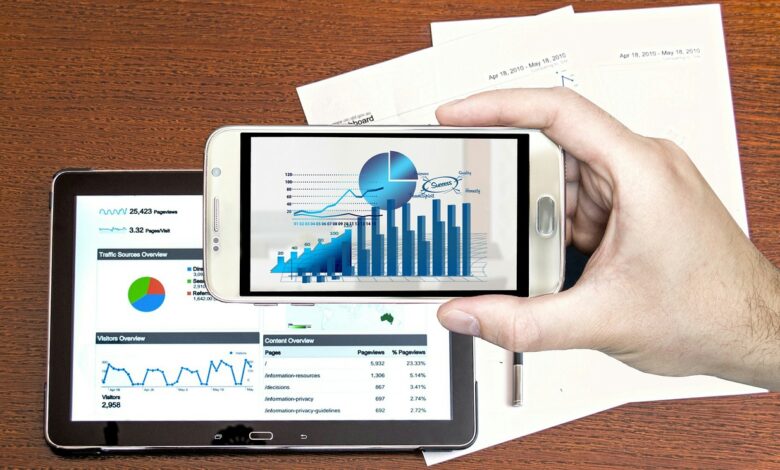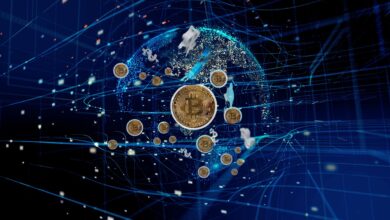Understanding the Surge Rajkotupdates.News : Us Inflation Jumped 7.5 In In 40 years High Explained

In recent months, economic headlines have been dominated by a significant surge in inflation rates, with the United States experiencing a dramatic increase of 7.5%, marking the highest rate in 40 years. This unprecedented rise has garnered widespread attention, leaving many wondering about the factors driving this inflationary spike and its implications for the economy. In this comprehensive guide, we’ll dissect the causes, effects, and broader context of this inflation surge, as reported by Rajkotupdates.News : Us Inflation Jumped 7.5 In In 40 years.
What is Inflation?
Before diving into the specifics of the recent surge, it’s important to understand what inflation is. Inflation refers to the rate at which the general level of prices for goods and services is rising, leading to a decrease in purchasing power. When inflation is high, each unit of currency buys fewer goods and services, which can erode the value of savings and affect the cost of living.
The Current Surge in Inflation
As of the latest reports, US inflation has surged to 7.5%, a level not seen in four decades. This sharp increase has alarmed economists, policymakers, and consumers alike. To grasp the magnitude of this change, consider that inflation rates over the past few years were significantly lower, often hovering around 2% or less. This recent spike represents a substantial deviation from the norm and warrants a closer examination.
Factors Contributing to the Surge
Several key factors have contributed to this dramatic rise in inflation:
Pandemic-Related Supply Chain Disruptions
The COVID-19 pandemic has caused significant disruptions in global supply chains. Lockdowns, restrictions, and labor shortages have led to delays and shortages in the production and transportation of goods. These disruptions have led to increased costs for raw materials and finished products, which are then passed on to consumers in the form of higher prices.
Increased Demand Amidst Supply Constraints
As economies reopened and consumer spending surged, demand for goods and services rebounded faster than supply chains could recover. This mismatch between high demand and constrained supply has contributed to price increases across various sectors, from groceries to electronics.
Rising Energy Prices
Energy prices, including those for oil and gas, have experienced significant increases. Higher energy costs translate into increased production and transportation costs, which are again passed on to consumers. The volatility in energy prices has been driven by geopolitical tensions, production cuts, and fluctuating global demand.
Labor Market Dynamics
The labor market has also played a role in the inflation surge. Many industries have faced labor shortages, leading to higher wages as companies compete to attract and retain employees. Increased labor costs can contribute to higher prices for goods and services, as businesses seek to offset their increased expenses.
Monetary Policy and Fiscal Stimulus
In response to the economic impact of the pandemic, the US government implemented substantial fiscal stimulus measures and the Federal Reserve maintained low interest rates to support economic recovery. While these measures were intended to stimulate growth, they also increased the money supply. An excess of money in circulation, coupled with limited goods and services, can lead to inflation.
Economic Implications of High Inflation
The surge in inflation has several economic implications:
Decreased Purchasing Power
As prices rise, the purchasing power of consumers decreases. This means that individuals need more money to buy the same goods and services, which can strain household budgets and reduce the overall standard of living.
Increased Cost of Living
High inflation leads to an increase in the cost of living, particularly affecting essentials like food, housing, and transportation. For many households, especially those on fixed incomes, these rising costs can be challenging to manage.
Impact on Savings and Investments
Inflation erodes the real value of savings and fixed-income investments. For individuals who have saved money in low-interest accounts or invested in bonds, the returns may not keep pace with inflation, reducing the real value of their assets.
Policy Adjustments
The Federal Reserve and other policymakers may respond to high inflation with changes in monetary policy. This could include raising interest rates to curb inflationary pressures, which can affect borrowing costs and investment decisions.
read must The Ultimate Guide to Fintech in Asia: https//FintechAsia.net Edition
Historical Context: Inflation in the Past 40 Years
To understand the significance of the current inflation surge, it’s helpful to look at historical inflation trends. Over the past 40 years, inflation in the US has generally been relatively stable, with occasional spikes. The 1970s and early 1980s were marked by high inflation rates due to factors such as oil price shocks and economic instability.
Rajkotupdates.News : Us Inflation Jumped 7.5 In In 40 years Since then, inflation has been more moderate, often remaining within the target range set by the Federal Reserve. The recent 7.5% surge is reminiscent of the high inflation periods of the past, highlighting how economic conditions can shift rapidly and unpredictably.
The Road Ahead: What to Expect
Looking forward, the trajectory of inflation will depend on several factors, including:
- Supply Chain Resilience: If global supply chains stabilize and production ramps up, it may alleviate some inflationary pressures.
- Monetary Policy: The Federal Reserve’s actions to manage inflation through interest rate adjustments and other measures will be critical in shaping future inflation trends.
- Geopolitical and Economic Developments: Ongoing geopolitical tensions, changes in energy prices, and other economic factors will continue to influence inflation.
Conclusion
The recent Rajkotupdates.News : Us Inflation Jumped 7.5 In In 40 years is a significant economic event with wide-ranging implications. Understanding the factors driving this rise, from supply chain disruptions to labor market dynamics, helps to contextualize its impact on the economy and individuals. While the current inflationary environment poses challenges, it also highlights the complex interplay between various economic forces and the importance of informed policymaking in navigating these changes.
As we continue to monitor the economic landscape, staying informed about inflation trends and their underlying causes will be crucial for making sound financial decisions and adapting to the evolving economic environment.
FAQs About Rajkotupdates.News : Us Inflation Jumped 7.5 In In 40 years
1. What does the 7.5% inflation rate mean for the US economy?
The 7.5% inflation rate signifies a significant increase in the general price level of goods and services in the US, the highest rate in 40 years. This high level of inflation means that the purchasing power of the dollar is decreasing, causing consumers to spend more to buy the same amount of goods and services. This can lead to a reduced standard of living and increased costs for everyday essentials.
2. What factors have contributed to the recent inflation surge?
Several factors have contributed to the recent surge in inflation:
- Pandemic-Related Supply Chain Disruptions: Lockdowns and restrictions led to delays and shortages in goods production and transportation.
- Increased Demand: Post-pandemic economic recovery saw a surge in consumer demand, outpacing supply.
- Rising Energy Prices: Higher costs for oil and gas have increased production and transportation expenses.
- Labor Market Issues: Labor shortages have driven up wages, which can lead to higher prices for goods and services.
- Monetary Policy: Increased money supply due to fiscal stimulus and low interest rates has also contributed to inflation.
3. How does this inflation rate compare to historical trends?
The 7.5% inflation rate is a significant deviation from the more moderate inflation rates experienced over the past few decades. Historically, the last time inflation was this high was in the late 1970s and early 1980s, a period marked by economic instability and oil price shocks. The recent spike reflects a return to high inflation levels not seen in 40 years.
4. What impact does high inflation have on consumers?
High inflation impacts consumers in several ways:
- Decreased Purchasing Power: Consumers can buy less with the same amount of money as prices rise.
- Increased Cost of Living: Essentials like food, housing, and transportation become more expensive.
- Erosion of Savings: The real value of savings and fixed-income investments decreases as inflation erodes purchasing power.
5. What measures are being taken to address high inflation?
To address high inflation, policymakers and the Federal Reserve may take several actions:
- Adjusting Interest Rates: The Federal Reserve may increase interest rates to reduce inflationary pressures.
- Monetary Policy Adjustments: Changes in monetary policy to manage the money supply.
- Supply Chain Improvements: Efforts to stabilize and improve supply chains to reduce disruptions.




